The Annual Meeting of Chinese
National Committee on Large Dams (CHINCOLD) was held in Beijing from April 11
to 15, 2022. At the opening ceremony of the meeting, the winners of the 3rd
International Milestone Concrete Dam Award were announced. The award went to
Jinping I Arch Dam from China, Glen Canyon Arch Dam from USA, Xiangjiaba
Gravity Dam from China and Okutadami Gravity Dam from Japan. LIU Weiping, Vice
Minister of the Ministry of Water Resources together with more than 1500
delegates joined the award ceremony.
To summarize the important
technical achievements in dam construction and identify the milestone dam
projects, Chinese National Committee on Large Dams (CHINCOLD) and United States
Society on Dams (USSD) jointly initiated the evaluation and selection of the
International Milestone Concrete Dam Projects in 2011. The nominated projects
were recommended by national committees of the International Commission on
Large Dams (ICOLD) and eminent experts worldwide. So far, the milestone
concrete dam award had been selected for 3 sessions. 13 concrete dams were
awarded as the International Milestone Concrete Dam Projects, including Three
Gorges Gravity Dam, Ertan arch dam, Xiaowan Arch Dam from China, Hoover Arch
from USA, Grand Dixence Gravity Dam from Switzerland etc.
As the representatives of awarded
dams, WANG Jimin, Deputy General Manager of Yalong River Basin Hydropower
Development Co., Ltd., Del Shannon, President of United State Society on Dams
(USSD), WANG Yihua, consultant of China Three Gorges Construction Engineering
(Group) Co., Ltd. and Masayuki Kashiwayanagi, Managing Director of Japanese
National Committee on Large Dams (JCOLD) respectively gave a brief introduction
on each awarded dam at the opening ceremony.
The opening ceremony was videotaped
and uploaded to CHINCOLD Cloud Platform at https://www.chincold-smart.com/live/meeting,
which has been visited for more than 7000 times after the conference. The event
was reported by People's Daily, China Water Resources News and China Electric
Power News.
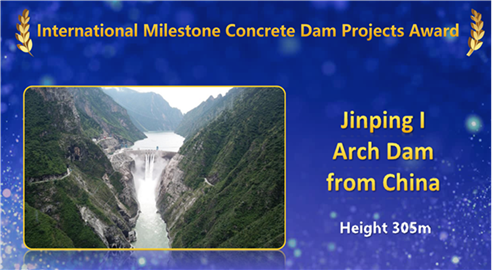
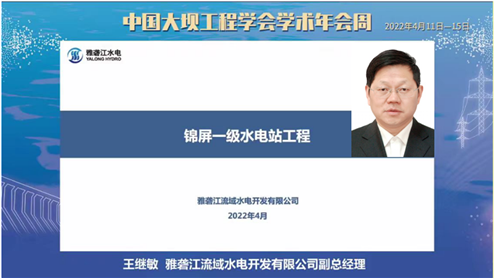
WANG Jimin, deputy
general manager of Yalong River Basin Hydropower Development Co., Ltd.,
introduced Jinping I arch dam
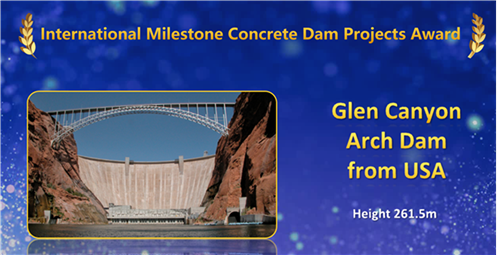
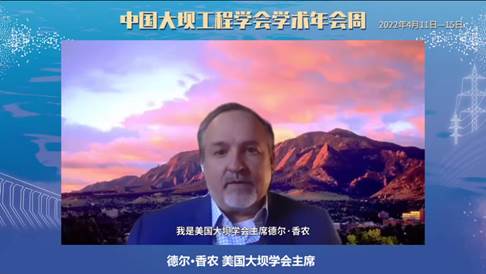
Del Shannon,
President of USSD, introduced the Glen Canyon Dam
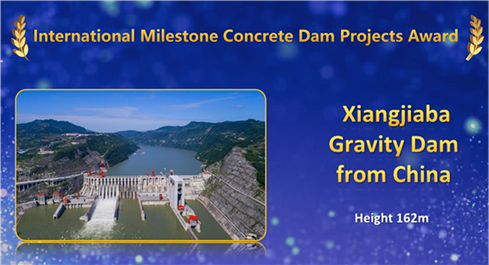
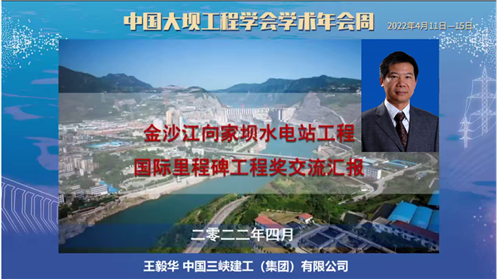
WANG Yihua,
consultant of China Three Gorges Construction Engineering (Group) Co., Ltd.,
introduced the Xiangjiaba Dam
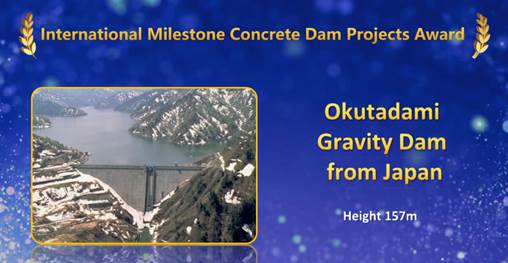
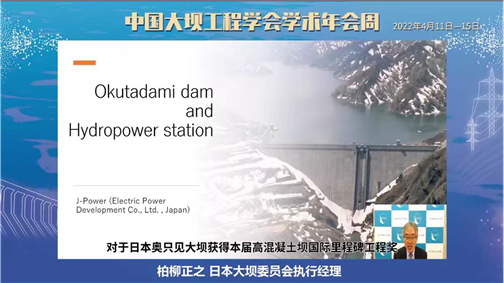
Masayuki Kashiwayanagi,
Managing Director of JCOLD, introduced the Okutadami dam
Brief introduction
on the winning projects of the 3rd International Milestone Concrete
Dam Project Award
1.
Jinping I Arch Dam
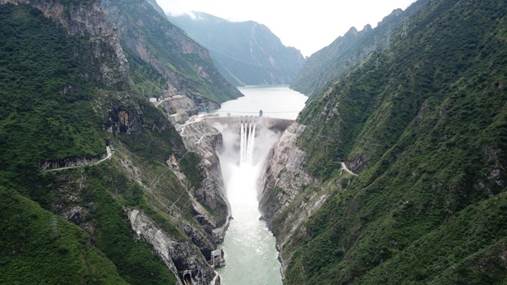
Jinping
I Arch Dam in China (H= 305m).
As a 305m-high double curvature
concrete arch dam, Jinping I Dam is the highest dam in the world recognized by
Guinness World Record. Jinping I Hydropower Station resides on the Yalong
River, in Liangshan Yi Autonomous Prefecture, Sichuan, and tops all other
cascade hydropower stations in the lower reach of Yalong River. Costing a total
of RMB 40.1 billion, it has a total installed capacity of 3,600MW and a
multi-year average annual power generation of 16.62 billion kWh. Since it was
put into operation, it has significantly improved the ratio of clean energy in
China's energy structure, assisted in the poverty alleviation of the west part
of China, and helped the flood control of the Yangtze River. Jinping I
Reservoir has a normal storage water level of 1,880m and a dead water level of
1,800 m. Under the normal storage water level, the storage capacity is 7.76
billion m3 and the regulation capacity is 4.91 billion m3.
Therefore, it is an annual regulation reservoir. The dam has a crest elevation
of 1,885m and a minimum foundation surface elevation of 1,580m. Its crown
cantilever has a crest thickness of 16m and a base thickness of 63m. For the
top arch, its center line has an arc length of 552.23m; its thickness-to-height
ratio is 0.207; its arc-to-height ratio is 1.811. The dam body has used 5.58
million m3 of concrete. During construction, a series of key
technical issues were encountered and solved. These complicated technical
difficulties made the construction extremely challenging. In 2018, Jinping
I Hydropower Station won the Award for Outstanding Project of the Year of
International Federation of Consulting Engineers (FIDIC).
2. Glen
Canyon Arch Dam
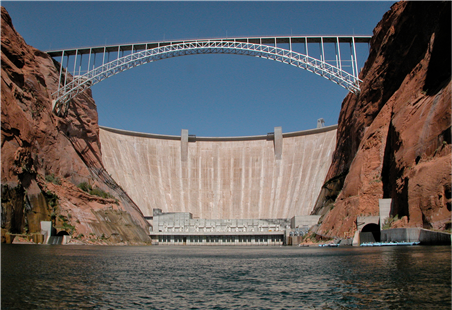
Glen
Canyon Arch Dam in the United States (H=216.5m)
Glen Canyon Dam is the main part of
the Colorado River Storage Project to serve the water needs of the Upper
Colorado River Basin States. The primary purpose of the dam construction was to
store water for delivery to the Lower Basin States and produce hydroelectricity
to fund participating projects throughout the Upper Basin. Secondary benefits
of Glen Canyon Dam include the storage of treacherous peak flows in Lake Powell
and recreation administered by the National Park Service. Construction of Glen
Canyon Dam officially began on October 16, 1956, when President Dwight D.
Eisenhower telegraphed a signal from Washington, D.C. that triggered an
explosion along the canyon walls. From 1956 until completion in 1966, the
Bureau of Reclamation (Reclamation) oversaw construction of the 216-m-high,
constant-radius thick-arch structure with a 12.5-m diameter tunnel- type
spillway through each abutment and an outlet works through the dam near the
left abutment. The indoor type powerplant is located immediately downstream of
the dam and is equipped with eight 165 MW generators, driven by 254000
horsepower vertical-axis Francis turbines at gross hydraulic head of 160 m. Glen
Canyon Dam is one of the most important dams in the United States. Great
progress and technological innovation have been made in the design and
construction of concrete dams.
3. Xiangjiaba
Gravity Dam
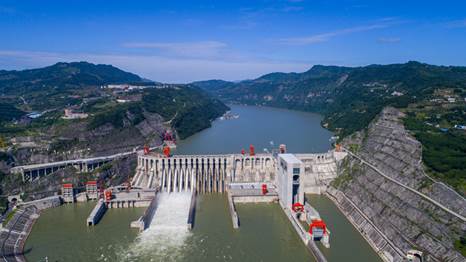
Xiangjiaba
Gravity Dam in China (H=162m)
Xiangjiaba Hydropower Project, the
utmost downstream project of the cascade development on the Jinsha River, is
the backbone power source of the National West to East Electric Power
Transmission Program. It is developed primarily for power generation,
concurrently with multipurpose benefits of navigation improvement, flood
control, irrigation, sediment retention, and reregulation for the Xiluodu
Hydropower Station. It is the only project on the Jinsha River that boasts huge
farmland irrigation and high navigation capacity. It can play an important role
in safeguarding the national energy security, improving the efficiency of water
resources utilization in the river basin, promoting the connection of Southwest
China with Central China and East China by waterway, boosting the regional
socio-economic development, and advancing the environmental protection. The
project has a normal storage level of 380 m, a total reservoir capacity of
5.163 billion m3,a
total installed capacity of 6,400 MW (8×800 MW), a mean annual power generation
of 30.88 TWh, a firm output of 2,009 MW, an irrigated area of 353,330 ha, and a
total investment of 54.165 billion Chinese Yuan as per the cost estimate at the
feasibility study stage.
4. Okutadami
Gravity Dam
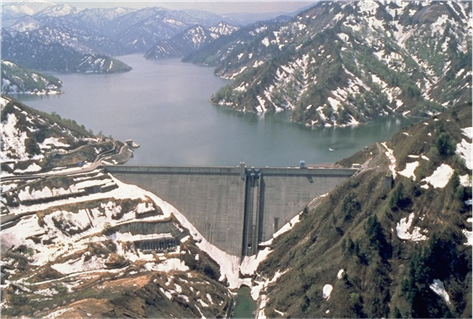
Okutadami
Gravity Dam in Japan (H=157m)
Okutadami hydropower project had
been enacted in 1951 as the national project for the recovery and the development
of the economy in Japan after the World War II. Okutadmi dam was designed for
the Okutadami hydropower station which was expected to supply 500 GWh
electricity annually to Tokyo capital area. The Okutadami dam completed in 1961
is a 157 m high concrete gravity dam (PG). It was the third case of PGs beyond
150 m high in Japan. It is located in central Japan and situates the most
upstream in the Tadami river which originates Lake Oze and flow toward the
north. The total installed capacity of the project is 360MW. After 40 years of
operation, the capacity was expanded by 200MW to meet the demand of power
consumption peak. The total storage capacity of the reservoir is 600 million m3,
which is the largest reservoir in Japan. The dam is located in a deep mountain
area, with heavy snow in winter which caused great difficulty in construction.
A road of 22 km has been built for the construction. In terms of temperature
control, cooling water pipes are used, longitudinal joints and joint grouting
are set at the lower part of the dam, and cable crane is used as the main
transportation equipment. These technologies provide the foundation for the dam
construction in Japan afterward. Experienced the Sino Vietnam earthquake and
aftershock in Niigata county, the dam has operated stably for 60 years.







